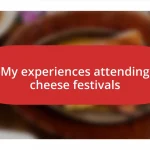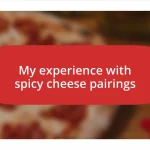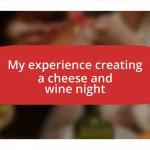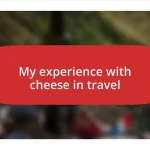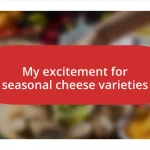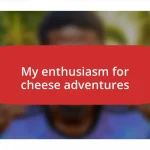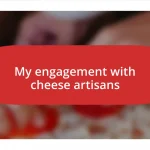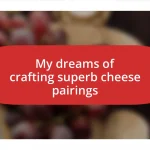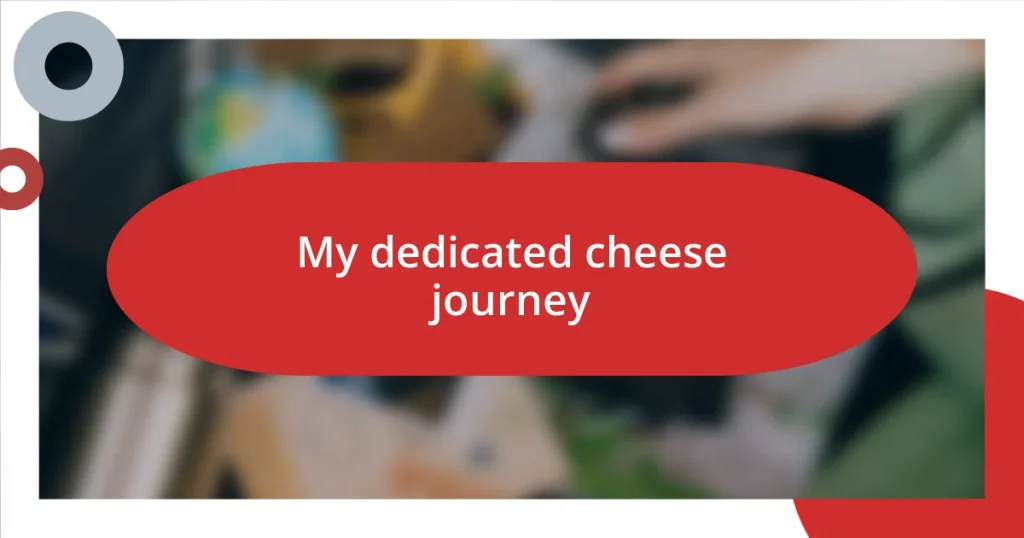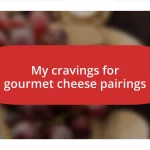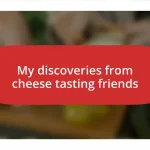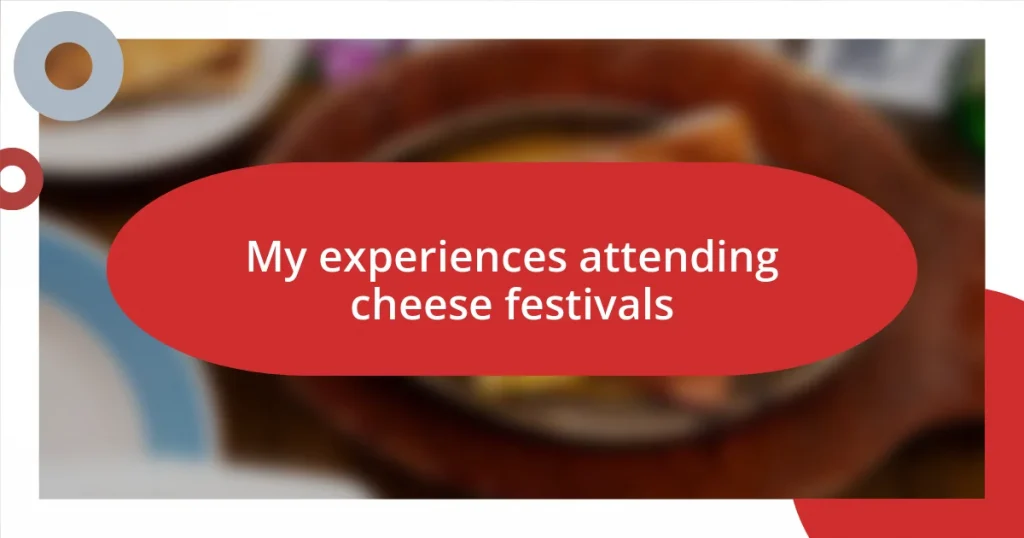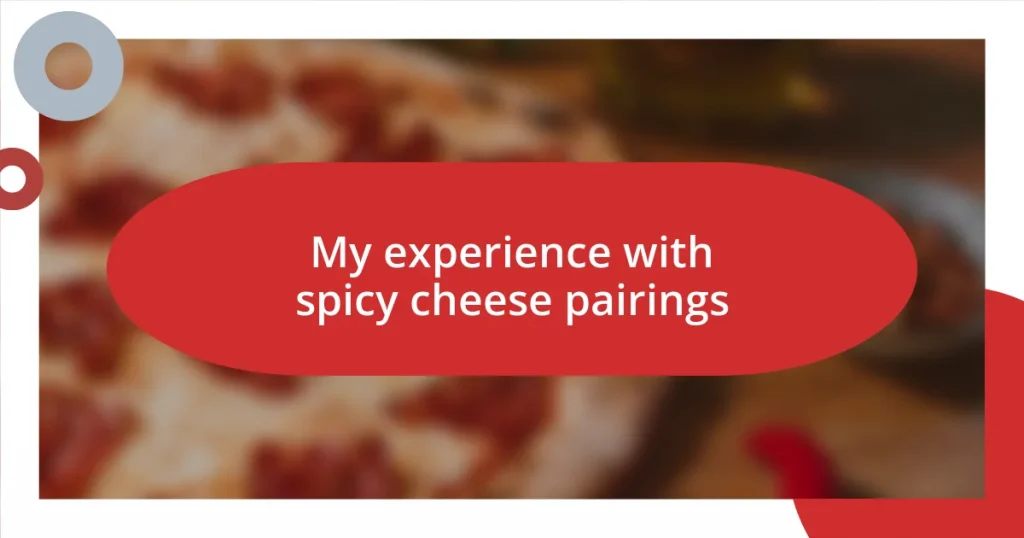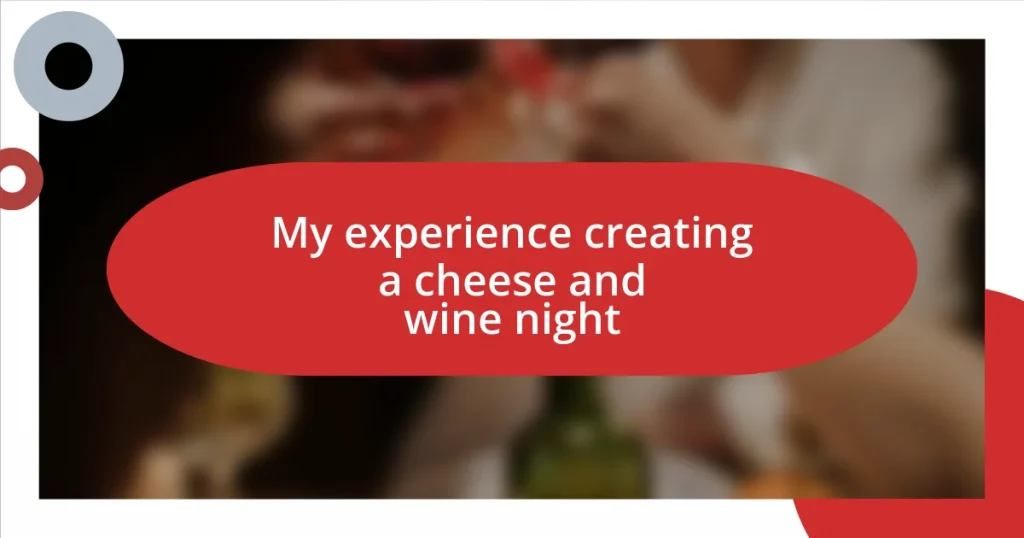Key takeaways:
- Cheese varieties have distinct flavors and textures that reflect their origins and the traditions of their makers, leading to a rich culinary experience.
- The cheese-making process combines art and science, with each stage crucially influencing the final product’s flavor and texture.
- Creating memorable cheese tasting events involves careful selection of cheeses, thoughtful presentation, and an engaging atmosphere to enhance enjoyment and connection among guests.
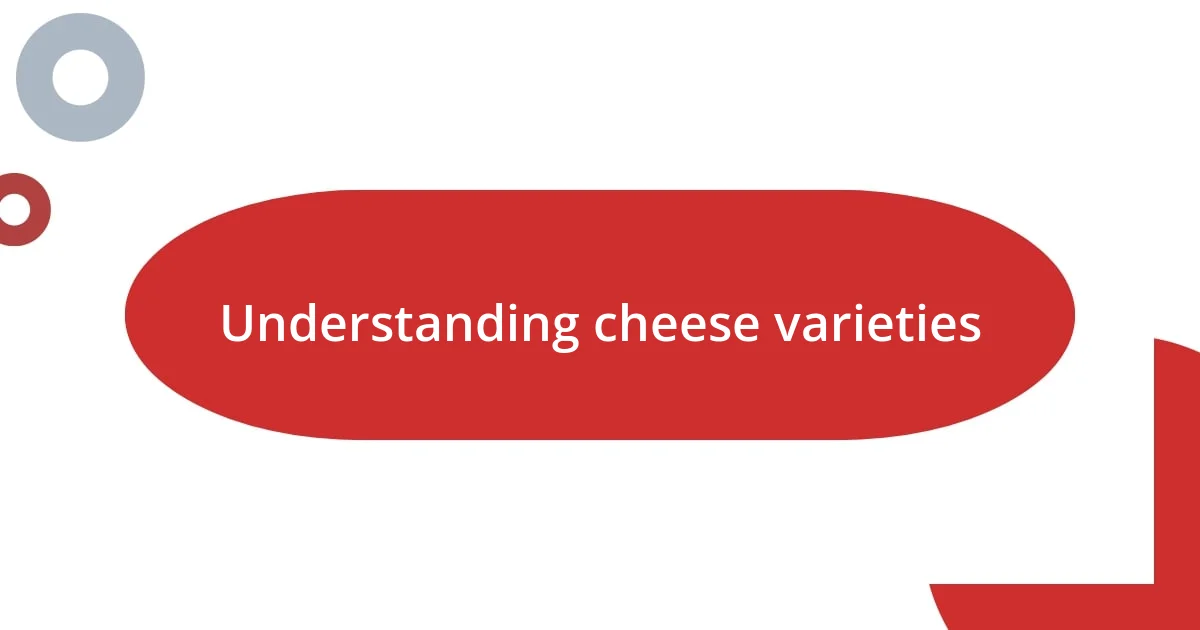
Understanding cheese varieties
When I first started exploring the world of cheese, I was astonished by the sheer variety out there. It’s not just about the taste; cheese has textures ranging from creamy Brie to crumbly Feta, each bringing its own personality to a dish. Have you ever wondered how a single ingredient can transform a meal so dramatically?
There’s something magical about discovering a new type of cheese that resonates with you. The first time I tried aged Gouda, I was captivated by its caramel notes and crunchy tyrosine crystals. I found myself daydreaming about all the combinations—imagine it paired with a rich, fruity red wine!
As I delved deeper, I learned that each cheese variety not only tells a story of its region but also reflects the traditions of its makers. It made me appreciate the craft behind cheeses like Roquefort, where the unique blue veins are created through a delicate mold process. Isn’t it fascinating how every bite connects us to a place and its culture?
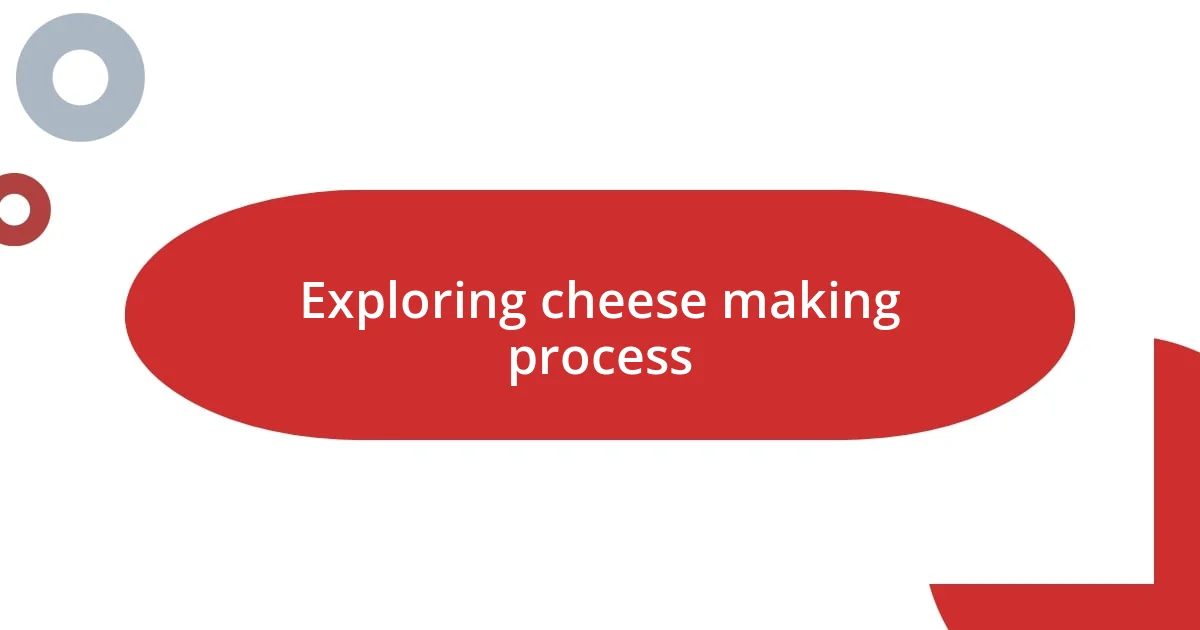
Exploring cheese making process
The cheese-making process is a captivating blend of art and science that begins with selecting the right milk. During my journey, I was surprised to discover that milk can come from cows, goats, sheep, and even buffalo, each contributing its unique flavor profile. This selection is just the beginning; the process entails coagulation, where rennet and starter cultures play essential roles in turning liquid milk into curds and whey.
Here’s a simple breakdown of the cheese-making stages:
- Milk Selection: Choosing the type of milk dictates the cheese’s flavor.
- Coagulation: Adding rennet and cultures to form curds.
- Cutting the Curds: This increases whey separation and influences texture.
- Cooking: Heating curds can determine moisture content and consistency.
- Molding: Curds are placed in molds to shape the cheese.
- Aging: Storage in controlled conditions develops flavors and textures.
One unforgettable moment for me was witnessing curds transform into a beautiful wheel of cheese. As I stirred the pot, the warmth enveloped me, and I felt a profound connection to centuries of tradition. The anticipation of aging those curds was exhilarating; I remember thinking how time would nurture the flavors, much like a good friendship. Each step in this process is not just a task but an emotional journey that infuses every cheese with its unique story.
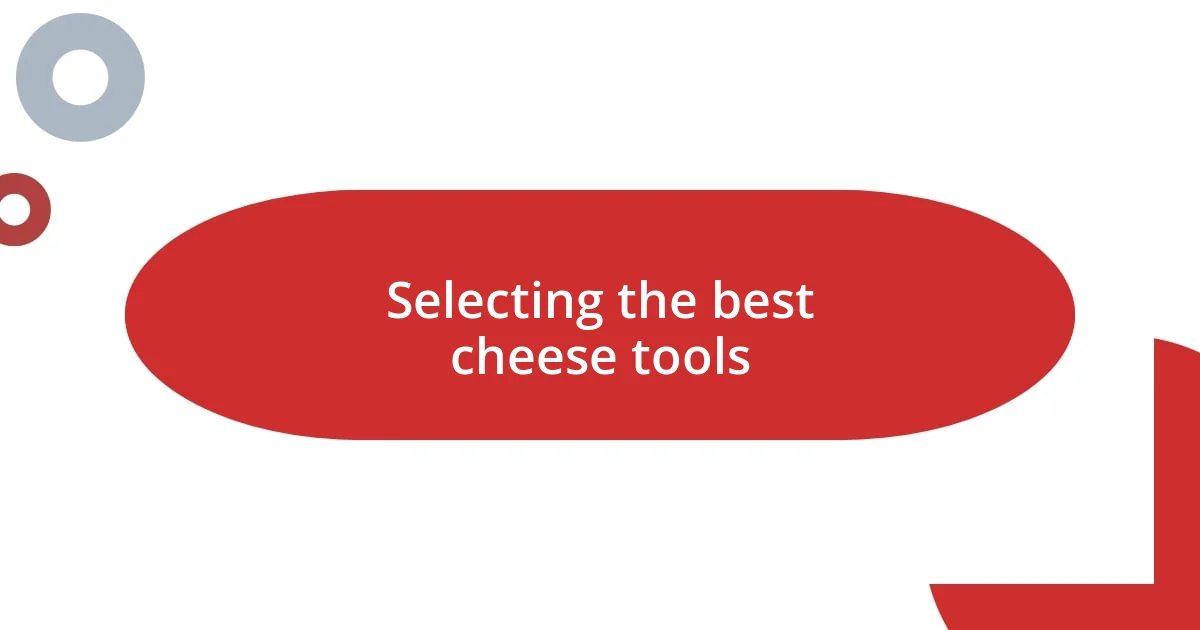
Selecting the best cheese tools
Selecting the right tools for cheese can elevate your cheese experience tremendously. I remember my first cheese board, thrown together with a mismatched assortment of knives and slices. The experience was chaotic and, quite frankly, a bit embarrassing. However, investing in a few quality tools transformed my gatherings. A sharp cheese knife, for example, helps you achieve clean cuts, ensuring each slice reveals the beautiful texture of the cheese.
When I first started diving into cheese tools, I felt overwhelmed by the variety available. A dedicated cheese board, along with a wire cutter, a plane, or even a simple cheese spreader, can make all the difference in presentation and enjoyment. Plus, there’s something satisfying about the ritual: setting out those tools and arranging the cheese just so. It feels almost ceremonial, like preparing an offering to the flavors waiting to be awakened.
It’s essential to consider how these tools complement your cheese preferences. If you gravitate towards soft cheeses, a flexible, small knife is your best friend. For aged or hard cheeses, a heavier, sturdy knife does the job with grace. I learned this lesson the hard way, attempting to cut a dense Parmigiano-Reggiano with a flimsy knife—what a disaster! Choosing the right tools not only enhances your technique but also enriches the overall cheese experience.
| Cheese Tool | Best For |
|---|---|
| Cheese Knife | Soft cheeses like Brie or Camembert |
| Certain Specialty Knife | Hard cheeses like Parmigiano-Reggiano |
| Cheese Board | Displaying and serving cheeses |
| Cheese Plane | Slicing thin pieces from blocks of cheese |
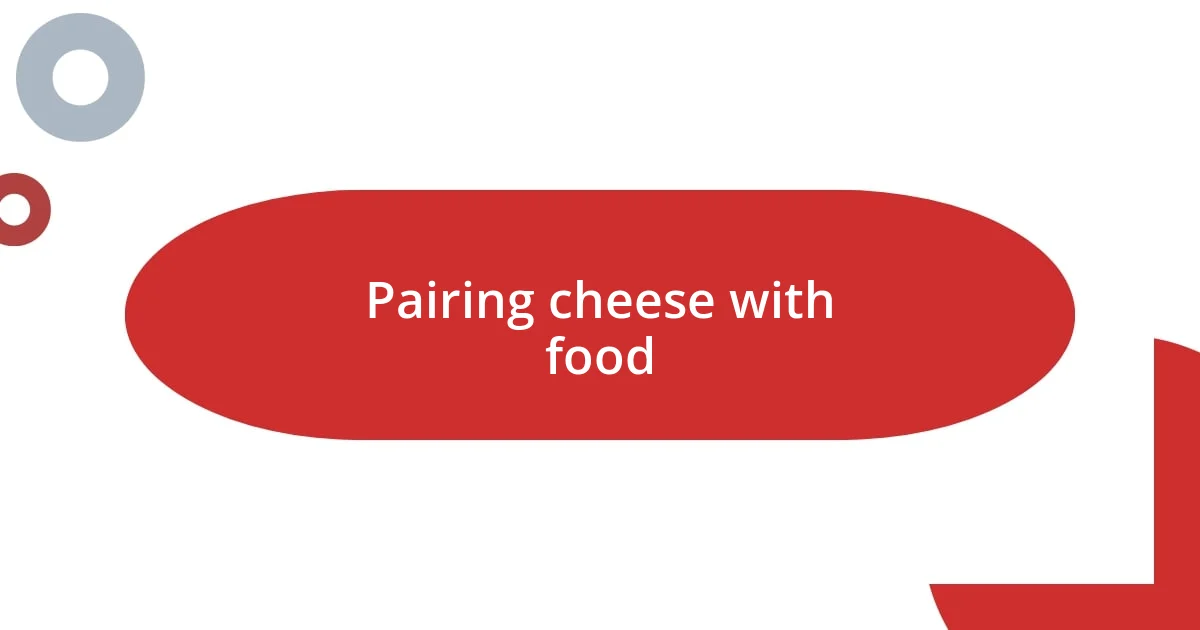
Pairing cheese with food
Pairing cheese with the right foods can elevate the entire tasting experience. I recall the first time I paired a creamy Brie with fresh strawberries; the combination of flavors was a revelation. The fruit’s sweetness contrasted beautifully with the rich, buttery notes of the cheese, creating a harmony that danced on my palate. Have you ever had that moment when flavors collide in a delightful way that makes you rethink everything? It’s like discovering a hidden treasure in a well-trodden path.
One of my favorite pairings is aged cheddar with savory crackers. The crispness of the cracker complements the sharpness of the cheese, making every bite a little adventure. I remember hosting friends over, and we all grabbed handfuls of the crackers, willingly indulging in cheese-stuffed bliss. It reminded me how the simplest combinations can spark joy and create laughter around the table. Sometimes, it feels like food is best enjoyed in good company, doesn’t it?
Don’t shy away from experimenting with unusual pairings, too! I once tried blue cheese with dark chocolate, and it was surprisingly delightful. The bite of the cheese mingled with the richness of the chocolate, creating a sophisticated flavor partnership. I felt like a culinary explorer, braving the uncharted waters of taste. So, what unexpected pairing have you tried lately? Your taste buds might be itching for that next adventure waiting to unfold!
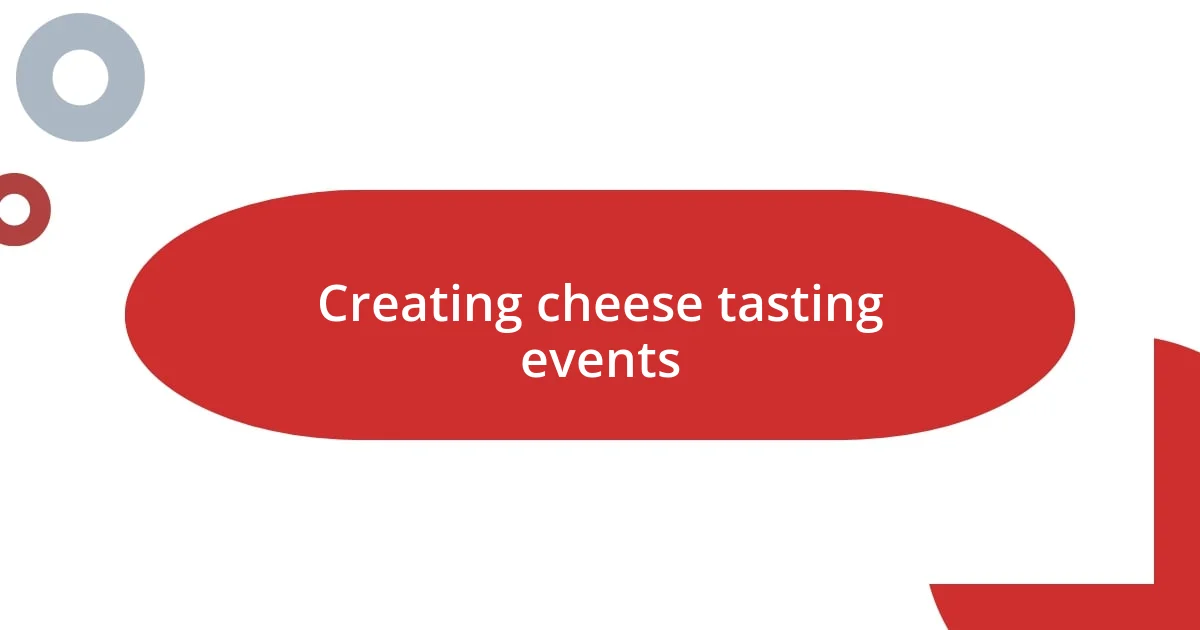
Creating cheese tasting events
Creating a cheese tasting event is all about the ambiance and the selections you choose. I once hosted a gathering where I dimmed the lights, lit some candles, and put on soft music. It transformed the entire experience into something intimate and memorable, elevating each cheese taste to an occasion rather than just a snack. Have you ever noticed how the atmosphere can change even the simplest of gatherings?
As for the cheese selection, I recommend including a variety of textures and flavors. One time, I curated a board with a creamy triple crème, a sharp blue cheese, and a rustic aged Gouda. The conversations that sparked over the distinct flavor profiles fueled the night; everyone had a favorite, and discussions flowed like the wine. Encouraging guests to share their preferences can turn a routine cheese tasting into a delightful exploration!
Don’t forget the importance of presentation. Use colorful fruits, nuts, and signature cheeses to create a vibrant display. I learned this the hard way with a board that looked disappointingly sparse. The moment I added some juicy figs and a drizzle of honey, the table became alive, drawing people in and making each bite feel like a lavish treat. What creative touches have you considered for your next cheese event? Your guests will appreciate the thoughtfulness!
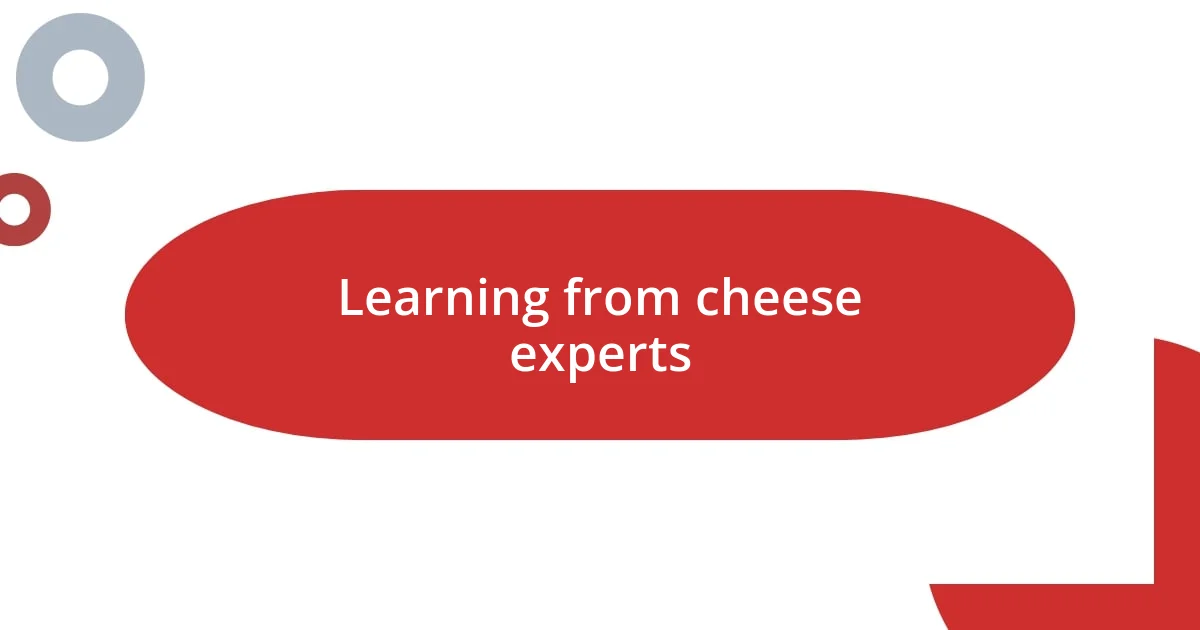
Learning from cheese experts
Learning from cheese experts has been an eye-opening component of my cheese journey. One particular event I attended featured a renowned cheesemonger who shared fascinating insights about the aging process of different cheeses. I can vividly recall when he described how temperature and humidity could create entirely distinct flavor profiles. It made me reconsider how much care and precision go into crafting each bite of cheese. Have you ever thought about the journey that cheese takes before it reaches your table?
The hands-on workshops have been some of my favorites. I once participated in a cheese-making class where the expert guided us through the process of making mozzarella from scratch. The excitement palpable in the room as we transformed simple ingredients into something so delicious was infectious. It wasn’t just the cheese; it was the shared experience of learning something new alongside fellow cheese enthusiasts. What’s something you learned recently that completely shifted your perspective?
Listening to experts discuss their passions is truly inspiring. I remember attending a talk by a cheese judge who emphasized the importance of balance in cheese tasting. She explained how flavors should neither overpower each other nor fade into the background. This concept clicked with me immediately, influencing how I’ve approached my tastings since. Isn’t it fascinating how a single conversation can enlighten your understanding and appreciation for something you thought you already knew?
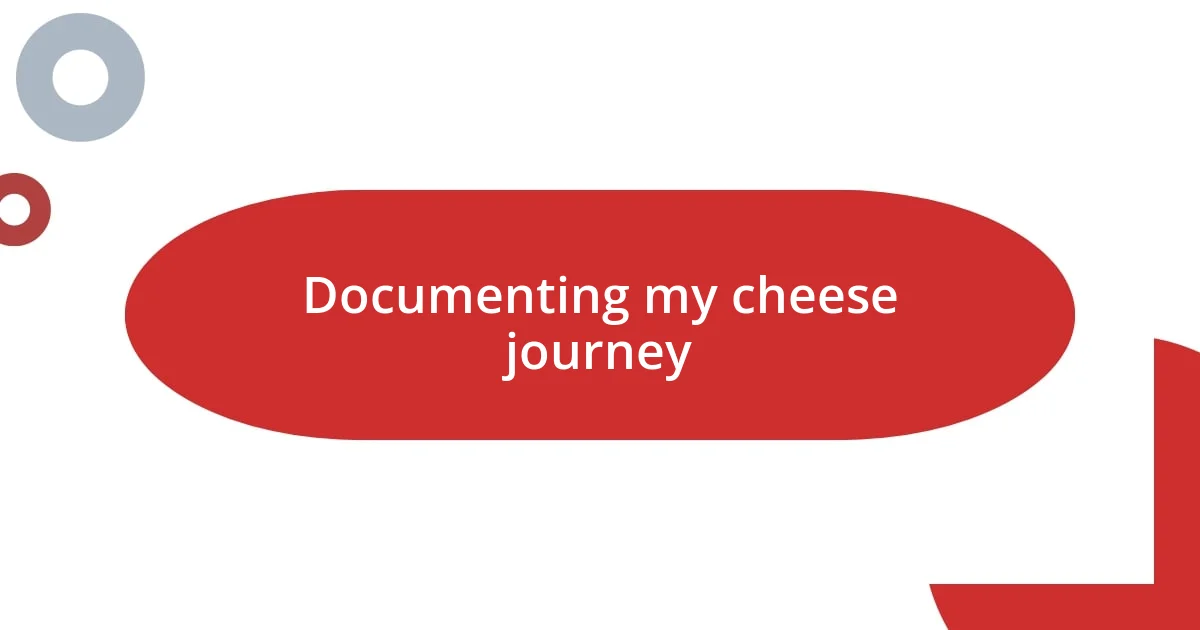
Documenting my cheese journey
Documenting my cheese journey has been an adventure filled with both delightful discoveries and a fair share of funny missteps. One sunny afternoon, I decided to start a cheese journal to keep track of my tastings and pairings. As I flipped through my early entries, I couldn’t help but chuckle at how naive I was in my descriptions. I once wrote about a cheese that smelled “like a wet dog” but I found utterly irresistible! Who knew that sometimes, our first impressions could be so wildly off base?
As I continue documenting, I’ve sought to capture not just the flavors but the emotions tied to each tasting experience. For example, I’ll never forget the rainy evening I spent sampling an earthy brie while curled up under a blanket. The warmth of the cheese contrasted beautifully with the coolness outside, making each bite a soothing embrace. Have you ever had a food experience that anchored you to a moment in time?
I’ve also begun to include photographs in my documentation, trying to capture the vibrant hues of my cheese boards and the joy on my friends’ faces. I remember snapping a picture at a gathering where everyone was savoring a tangy goat cheese paired with a sweet fig jam. The laughter and smiles that evening were almost as rich as the flavors we experienced. Isn’t it incredible how food can weave together memories and connect us in such profound ways? I find that my journey is more than just about the cheese; it’s about the people and stories that come alongside it.
